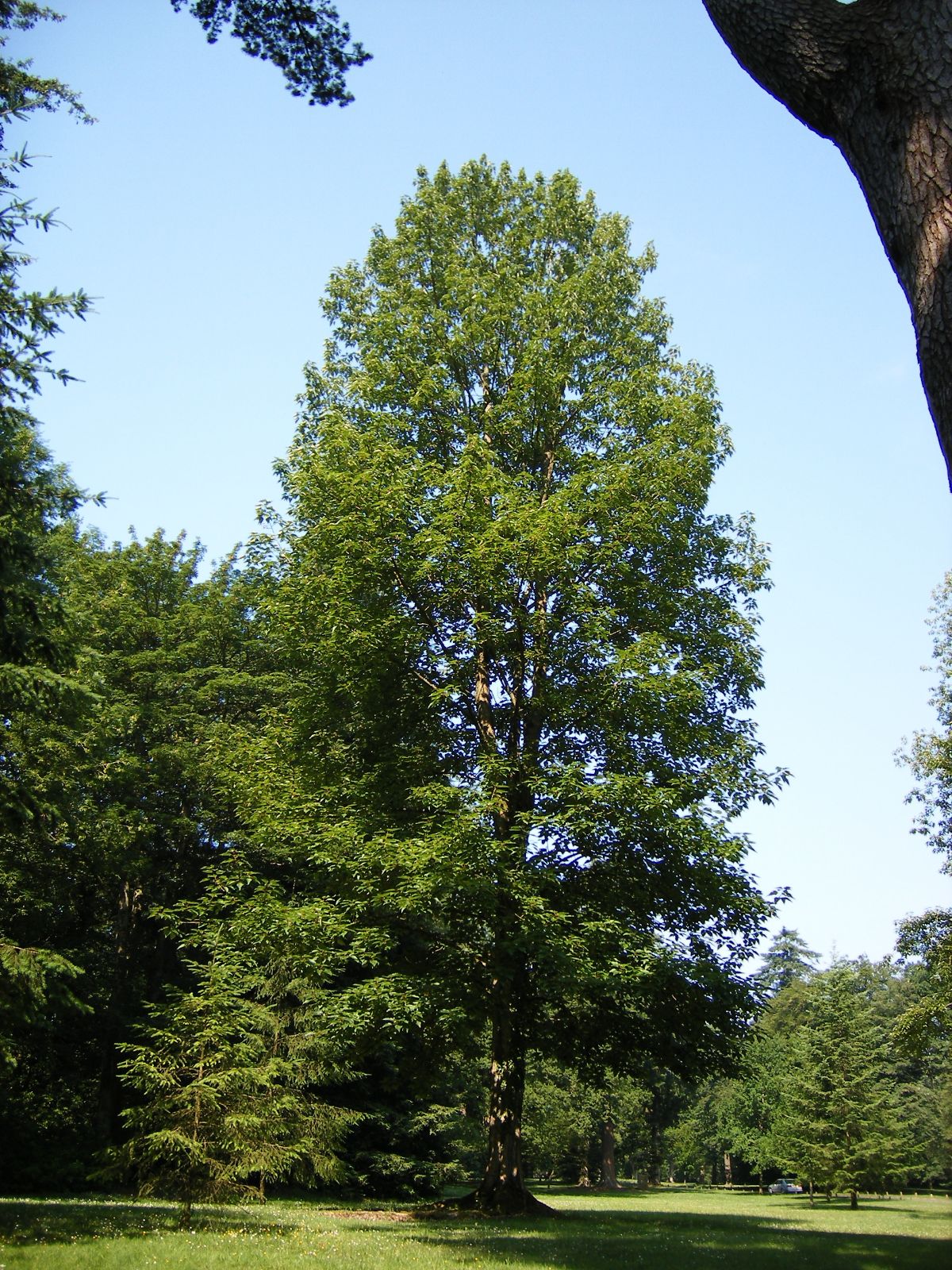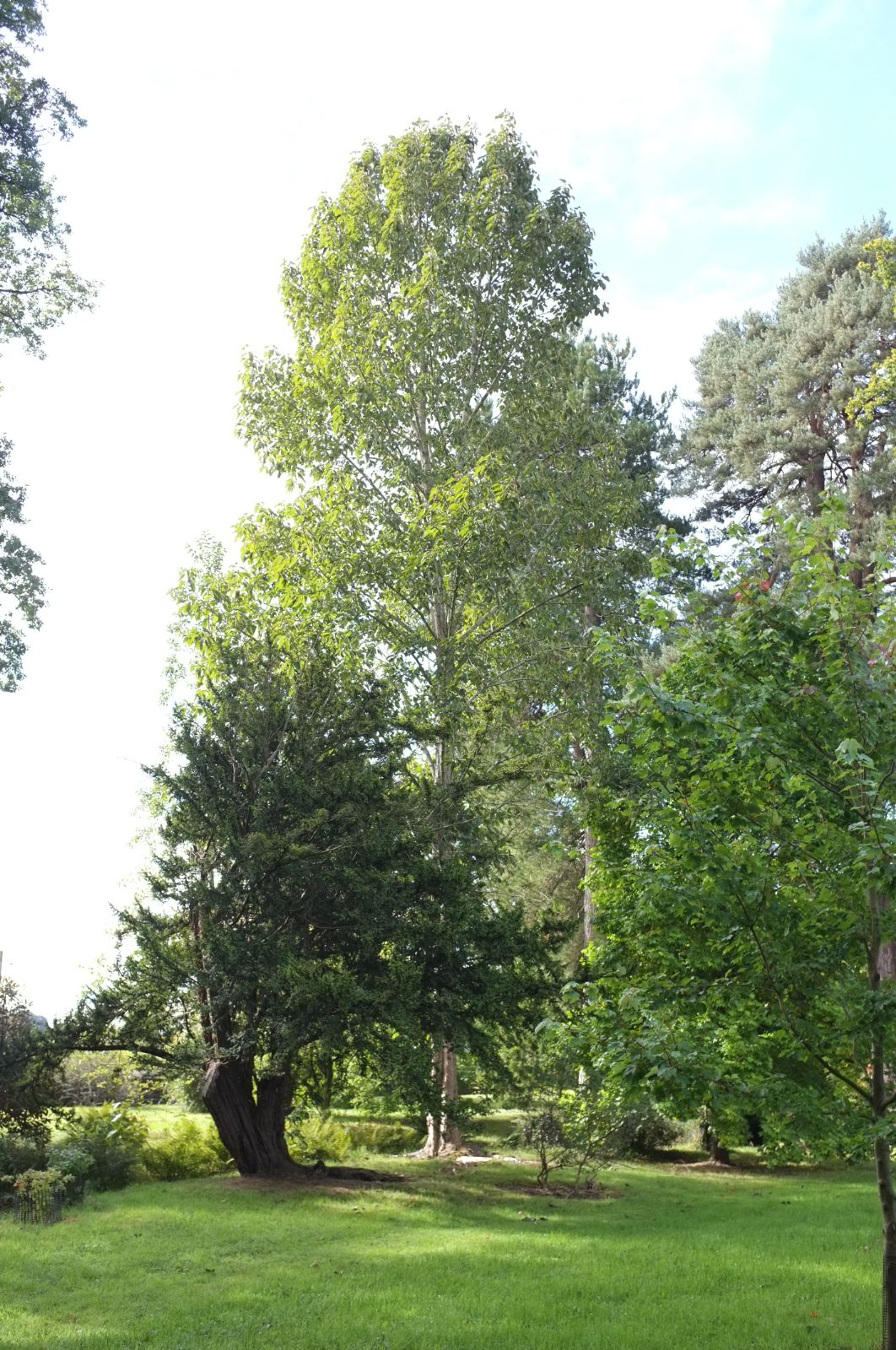Populus szechuanica
Credits
Article from Bean's Trees and Shrubs Hardy in the British Isles
Recommended citation
'Populus szechuanica' from the website Trees and Shrubs Online (treesandshrubsonline.
Genus
Infraspecifics
Other taxa in genus
- Populus acuminata
- Populus adenopoda
- Populus alba
- Populus angulata
- Populus angustifolia
- Populus balsamifera
- Populus × berolinensis
- Populus × canadensis
- Populus candicans
- Populus canescens
- Populus ciliata
- Populus deltoides
- Populus fremontii
- Populus × generosa
- Populus glauca
- Populus grandidentata
- Populus heterophylla
- Populus koreana
- Populus lasiocarpa
- Populus laurifolia
- Populus maximowiczii
- Populus nigra
- Populus purdomii
- Populus sargentii
- Populus simonii
- Populus tremula
- Populus tremuloides
- Populus trichocarpa
- Populus tristis
- Populus wilsonii
- Populus yunnanensis
A tree up to 80 ft high in cultivation; young stems angled and hairy at first, becoming terete and glabrous, brownish green the first season, greyish the second; lateral buds slightly viscid, slender, loosely appressed. Leaves on strong shoots ovate or elongate-ovate, 71⁄2 to 12 in. long, 5 to 8 in. wide, acute at the apex, mostly strongly cordate at the base, petioles stout, up to 3 in. long, reddish; leaves on young spurs 3 to 41⁄4 in. long, 17⁄8 to 21⁄2 in. wide, ovate to narrow-ovate, acuminate at the apex, rounded or slightly cordate at the base, petioles 11⁄4 to 21⁄2 in. long, slender; leaves at the ends of old spurs resembling those of the long shoots but not quite so large; all leaves dark green above, undersides pale green, becoming whitish on dried specimens, midrib and main veins densely furnished with more or less persistent curled hairs which near the base of the blade extend onto the minor veins, margins crenate-serrate to serrate, petioles hairy at first like the midrib, becoming glabrous. Catkins not seen.
The above description is made from specimens taken from a tree at Westonbirt, Glos., grown as P. szechuanica var. tibetica, and from another at Stourhead, Wilts. The origin of these trees, which are very similar, is not known, but they agree well with material in the Kew Herbarium taken from young trees received from the Arnold Arboretum in 1916 under Wilson’s number 4361; the corresponding herbarium specimen was collected by him in W. Szechwan near Mupin in 1910, and plants were sent under the same number. The description of P. szechuanica in previous editions of this work was based on the Kew plants, which no longer exist, and the hairiness of the shoots and leaves was remarked on. The Kew plants, and probably those at Westonbirt and Stourhead, came from the Arnold Arboretum under the name P. szechuanica, in which W.4361 had been included by Schneider. In 1933 Rehder described P. cathayana and transferred W.4361 to this new species. But the cultivated material under W.4361 in the Kew Herbarium agrees better with P. szechuanica, and that is certainly true of the Westonbirt and Stourhead trees. Probably all represent a pubescent form of that species. Wilson’s 4257, collected during the Veitch expedition, appears to be the same; also a specimen collected by Forrest in Yunnan on the Mekong-Salween divide.
The measurements of the trees referred to above are: Westonbirt, 82 × 41⁄4 ft (1972); Stourhead, 82 × 5 ft (1965) and 80 × 7 ft (1970).
From the Supplement (Vol. V)
Whatever may be the identity of the plants received under Wilson’s 4361, the undoubtedly true P. szechuanica was introduced by means of young plants collected south-east of Kangding (Tatsien-lu) in western Szechwan (W.4355). A tree under this number at Borde Hill in Sussex died around 1960 but was propagated by Messrs Hillier and is the source of the plants they distributed. The same firm’s P. szechuanica var. tibetica derived from stock received from a French nurseryman, and its history is unknown.
Roy Lancaster tells us that he saw what seemed to be P. szechuanica growing in the area of Minya Konka. This is not far from the locality where Wilson collected his plants.
The Stourhead tree mentioned on page 323 has been felled.
P violascens Dode
This poplar was described by the French dendrologist Dode in 1921 from a cultivated tree of Chinese origin, but he tells us nothing of its history. Plants cultivated in this country as P. violascens were received originally from France and bear a very strong resemblance to the pubescent form of P. szechuanica described above. Furthermore, the Polish authority W. Bugala has pointed out that plants in the Kornik collection, which came originally from Kew as P szechuanica szechuanica, are indistinguishable from P. violascens as represented at Kornik. There is therefore a strong probability that Dode described his species from a plant sent from the Arnold Arboretum as P. szechuanica Wilson 4361. His description agrees quite well with the pubescent form of P. szechuanica.P. violascens is placed by Rehder in the section Leucoides, as a close relative of P. lasiocarpa, and Bugala holds that P. szechuanica also belongs to that section and has been wrongly considered to be a balsam poplar. But the Westonbirt and Stourhead trees described above appear to be balsam poplars, and it seems on the whole more likely that it is P. violascens which has been wrongly placed. But flowering material should decide the matter.var. tibetica Schneid
This variety is founded on specimens of uncertain attribution collected in the N.W. Himalaya by Thomson and by Schlagintweit. Schneider considered that they represented a pubescent form of P. szechuanica and under this variety he also placed Wilson’s 4527, collected in Szechwan. If Schneider is right, the Westonbirt and Stourhead trees would be referable to var. tibetica, but further investigation may show that the balsam poplar of the N.W. Himalaya is specifically distinct from P. szechuanica.


